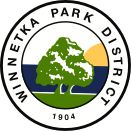Land
Park District Info
Location
Winnetka Park District
Admin + Recreation Office
540 Hibbard Road, Winnetka, IL 60093
P: (847) 501-2040
F: (847) 501-5779
E: wpdinfo@winpark.org
Hours
Monday – Friday: 8:30am – 5pm
Diversification of plantings is crucial for the long-term sustainment of a habitat. Without diversity, new diseases and pests that impact one type of plant can have a devastating impact on the overall habitat. Examples of this occurring throughout history include the Emerald Ash Borer and Ash trees, Dutch Elm Disease and Elm trees, the Asian Longhorned Beetle and Maple trees, among other examples.
To diversify the plantings in our parks and mitigate against future losses attributed to disease and insects, staff has developed and implemented diversification strategies throughout all park sites. The most extensive work has been completed at Crow Island Woods Park, which Emerald Ash Borer severely impacted. More than 100 dead and dying Ash trees have been removed and replaced with various native species at varying ages. The restoration at Crow Island Woods Park was completed in 2020.
Native plants occur naturally in a region and are what local birds, insects, and other life forms depend on for food and shelter. With urbanization and landscaping, foreign vegetation has been introduced to many natural habitats, negatively impacting local wildlife and out-competing native vegetation.
As an ongoing initiative, park district staff continuously monitor and assess the natural habitats throughout our 27 park sites, beaches, and Skokie Playfield campus to ensure native vegetation is thriving and invasive species are removed. When necessary, staff will plant new vegetation native to our habitats and remove any invasive species that may exist.
Although most trees are self-sufficient, they do require some level of maintenance to ensure longevity and health. This includes routine pruning of dead and dying branches and twigs, plus the removal of growths at the base. Additionally, mulch is added to non-woodland area trees to protect against landscape equipment, aid in soil moisture, and prevent unwanted vegetation.
Due to fluctuating water levels, high waves, and other factors, shorelines throughout Lake Michigan are experiencing erosion at unprecedented rates, with some shorelines eroding at a rate of 17 feet per year. Our own lakefront has been negatively impacted by shoreline erosion. In 2020-2021, the Park District completed shoreline protection work at Lloyd Beach. Engineering and design work is underway for shoreline protection measures at Elder and Centennial Beaches.
As with shoreline erosion, bluff erosion is a significant concern across Lake Michigan. The bluffs across our five lakefront properties have been impacted by erosion due to high waves and stormwater runoff from rainfall.
To preserve and protect our bluffs, the Winnetka Park District completed bluff restoration efforts at Maple Street Beach, Tower Road Beach, and Lloyd Beach. This included removing invasive trees and understory vegetation and replanting native vegetation to stabilize the bluffs. New plantings take three or more years to establish, and ongoing maintenance will be required to restore the bluffs fully.
Staff is currently working to develop a bluff restoration plan for Elder and Centennial Beaches.
Park District Info
Location
Winnetka Park District Admin / Recreation Office
540 Hibbard Road, Winnetka, IL 60093
P: (847) 501-2040
F: (47) 501-5779
E: wpdinfo@winpark.org
Hours
Monday – Friday: 8:30am – 5pm
